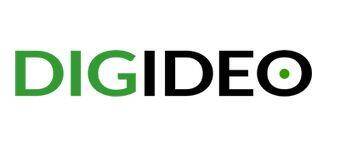Estimated reading time: 5 minutes
Turning a prospect into a loyal customer is both an art and a science. Every touchpoint with your brand—from the first interaction to the final purchase – plays a crucial role in converting leads into sales. To achieve this, businesses need to focus on three critical areas: building a seamless customer journey, optimizing the lead generation funnel, and leveraging omnichannel strategies like Google Ads to maximize profits.
Today, I read a newsletter from Google about their Think Lead Gen 2024.
There are a few outcomes from this meeting and its documents.
1. The Customer Journey: Guiding Prospects to Purchase
The customer journey is the path your potential customers take from awareness to action. By understanding their needs and behaviors at every stage, you can tailor your marketing efforts to ensure a smoother transition toward conversion. Here’s a simplified view of the typical customer journey:
- Awareness: At this stage, customers are discovering your brand for the first time. This is where Google Ads and other paid channels come into play, showcasing your products or services to those actively searching.
- Consideration: Once prospects are aware of your offerings, they start researching and comparing. Your focus should shift to nurturing them with relevant content, such as reviews, case studies, or testimonials.
- Decision: When prospects are ready to purchase, providing incentives like discounts or free trials can help close the deal. Personalized follow-ups or targeted ads can also make a big difference.
2. Building a High-Conversion Lead Generation Funnel
A well-designed lead generation funnel is crucial to transforming visitors into paying customers. It should capture leads at various customer journey stages and guide them toward conversion.
– Top of the Funnel (Awareness):
To capture attention, utilize engaging content—blogs, social media, and display ads. Google Ads is a powerful tool, especially when optimized for search intent and targeted keywords.
– Middle of the Funnel (Consideration):
This is where you nurture your leads. Offer value through free resources (like eBooks or webinars), and use remarketing strategies to keep your brand in front of them. I recommend Russell Brunson and his Click Funnel app and books to help you build an efficient and profitable funnel.
– Bottom of the Funnel (Decision):
At this stage, optimize your landing pages, CTAs, and checkout process. Use analytics tools to identify friction points and improve the user experience. Tools like Google Analytics and conversion tracking ensure you monitor and refine this process effectively.
3. Omnichannel Marketing: The Key to Reaching Your Audience Everywhere
An omnichannel approach ensures that your messaging is consistent across all platforms – email, social media, your website, or paid ads. This approach helps create a cohesive brand experience and allows you to meet prospects where they are.
By integrating Google Ads into your omnichannel strategy, you can effectively drive traffic, retarget potential customers, and convert leads into buyers. Remarketing ads, for instance, allow you to re-engage users who visited your site but didn’t convert, reminding them about your product or offering a special incentive to return.
4. Optimizing Google Ads for Profit
Optimization is the name of the game for Google Ads. To truly turn prospects into profit, your ad campaigns must be fine-tuned for high performance. Here are some key insights for profit-maximizing optimization:
– Keyword Targeting:
Focus on high-intent keywords that indicate a prospect is ready to purchase. Use long-tail keywords for more specific searches that often convert better. AI can help you with it.
– Ad Copy and Extensions:
Craft compelling ad copy that clearly outlines your unique value proposition (UVP). Leverage ad extensions (e.g., sitelinks, call buttons) to provide more options for engagement and increase click-through rates (CTR).
– Landing Page Optimization:
Ensure your landing pages are optimized for conversions by reducing load times, simplifying navigation, and making the CTA prominent. A seamless experience from the ad to the landing page increases the likelihood of conversion.
– Bid Strategies:
Test and refine your bidding strategy to ensure efficient spending. Use Target CPA (Cost per Acquisition) or ROAS (Return on Ad Spend) strategies to align ad spending with profit goals.
– Remarketing:
Implement remarketing campaigns to re-engage users who have shown interest but haven’t converted. Offering tailored ads to these users can increase your chances of closing the sale.
Relevance is the value for customers and drives value for businesses.
In today’s competitive landscape, connecting with your most valuable prospects is more important than ever. Let’s dive in Google data:
- Consumers consider many brands; few make their shortlists. Consumers who fill out a lead form or make a purchase consider 4.3 brands at the start of their journey but only 1.8 by the end.
- They prioritize relevance over personalization. Consumers place more importance on brand interactions relevant to their needs or past behaviors than on comparable interactions that are personalized with their name or personal details (33% versus 20%).
- Relevance has three key components. The top three characteristics that consumers look for when determining if a product or service is relevant to them are quality (53%), desired benefits or features (47%), and value (47%).
- Relevance drives results. U.S. advertisers who optimize their digital campaigns for high-value leads do so to increase conversions (53%) and ROI (47%).
- Google can help. Seventy-three percent of those U.S. advertisers say Google outperforms social platforms in driving high-quality leads.
You can effectively turn prospects into profit by creating a smooth customer journey, building an efficient lead generation funnel, adopting an omnichannel strategy, and optimizing Google Ads. Each stage of this process should work in harmony, ensuring that you capture leads, nurture them, and turn them into loyal customers. At Digideo, we specialize in creating data-driven strategies and tools that maximize your marketing ROI and drive real results. Contact us today to get started!
Ready to get started?
Let’s have a meeting to discuss it.
We are happy to discuss all aspects of your ecommerce business.


